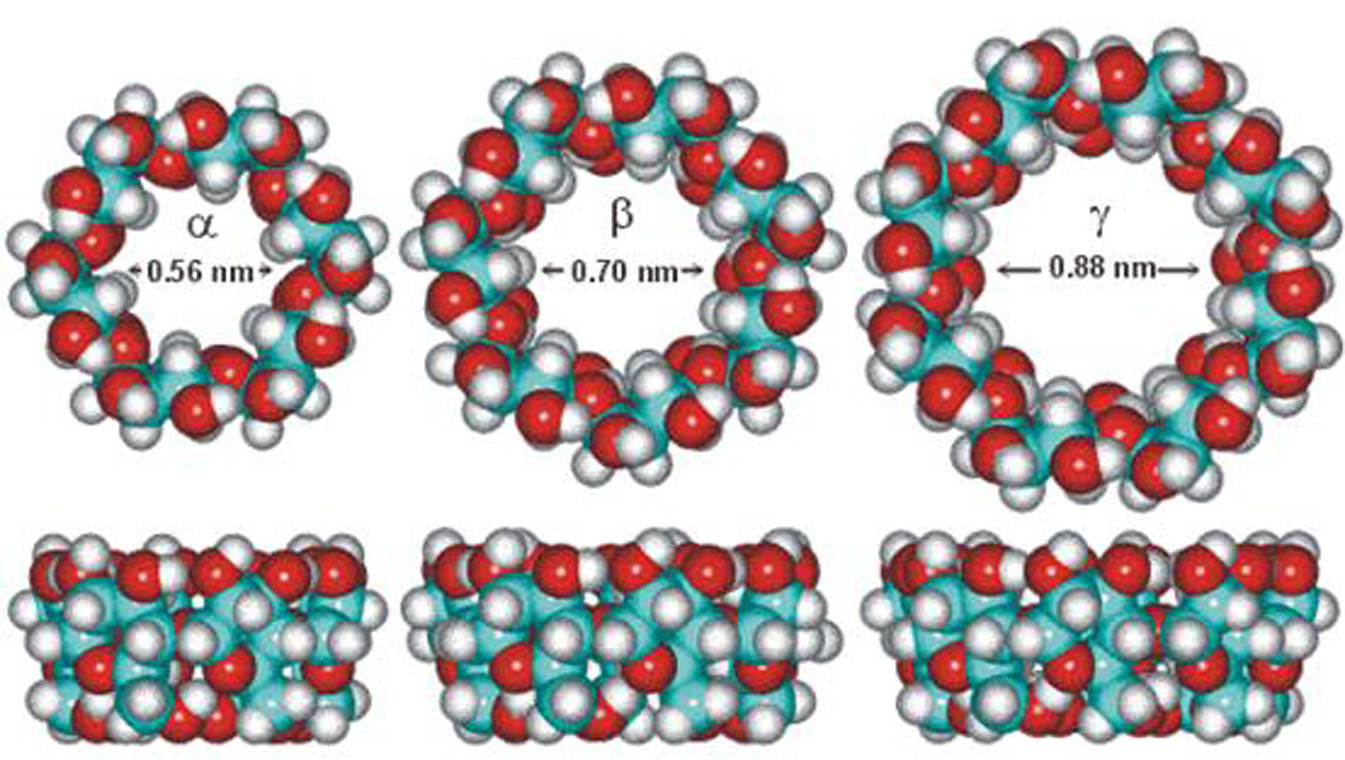August 23, 2020
Tag:
Cyclodextrinsare crystalline, water soluble, cyclic, non-reducing, oligosaccharides built upfrom six, seven, or eight glucopyranose units. Three naturally occurring CDs are alpha Cyclodextrin, beta Cyclodextrin,and gamma Cyclodextrin. All the hydroxyl groups in Cyclodextrins are orientedto the outside of the ring while the glucosidic oxygen and two rings of thenon-exchangeable hydrogen atoms are directed towards the interior of thecavity. This combination gives Cyclodextrins a hydrophobic inner cavity and ahydrophilic exterior. The hydrophobic internal cavity provides the capabilityto form inclusion complexes with a variety of "guest" hydrophobicmolecules (e.g. aromatics, alcohols, halides, fatty acids, esters, etc.).
How does Cyclodextrin look like?
Cyclodextrins have a specific toroidal shape: a tight conical cylinder witha hydrophilic exterior (due to the presence of hydroxyl radicals) and ahydrophobic cavity of a specific size. Generally 6 - 8 sugar units.
What are the types of Cyclodextrin?
Natural Cyclodextrins
The most common cyclodextrins are alpha, beta, and gamma cyclodextrins havingsix (α), seven (β), or eight (γ) anhydroglucose units in the ring structure.Among them, beta Cyclodextrin is mostly common used.
Different sizes lead to different physicochemical characteristics for therespective molecules:
|
Characteristics |
Alpha (α) |
Beta (β) |
Gamma (γ) |
|
Number of glucose units |
6 |
7 |
8 |
|
Molecular weight |
972 |
1135 |
1297 |
|
Water solubility(g/100ml), 25° C |
14.5 |
1.85 |
23.2 |
|
Cavity diameter (nm) |
0.57 |
0.78 |
0.95 |
|
Height of torus (nm) |
0.78 |
0.78 |
0.78 |
Chemically modified Cyclodextrins
Cyclodextrins can be modified by various proceduressuch as:
Substituting oneor more hydrogen atoms in the primary and/or secondary hydroxyl groups (esters,ethers, glycosylcyclodextrin)
Substituting oneor more primary and/or secondary hydroxyl groups
Chemically modified Cyclodextrins (CDM's) exhibitsubstantially increased aqueous solubility with concomitant retention of theinclusion complexing properties of the starting Cyclodextrin. They thereforeappear to offer specific applications within various industries, such as foods,pharmaceuticals, personal care/cosmetics, diagnostics, etc. Hydroxyalkyl bCyclodextrins such as Hydroxypropyl b Cyclodextrin are examples of thosechemically modified Cyclodextrins.



Contact Us
Tel: (+86) 400 610 1188
WhatsApp/Telegram/Wechat: +86 13621645194
Follow Us:




 Pharma Sources Insight January 2025
Pharma Sources Insight January 2025


